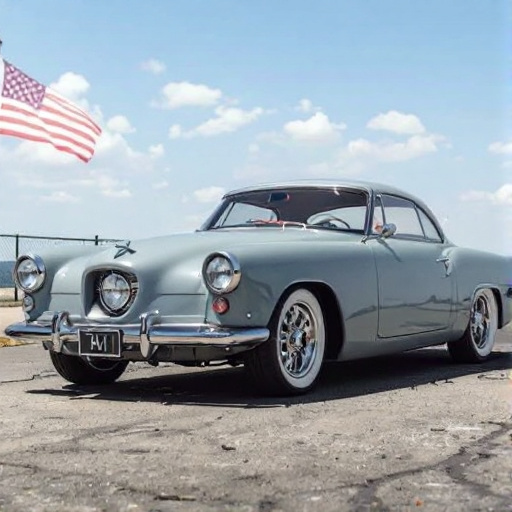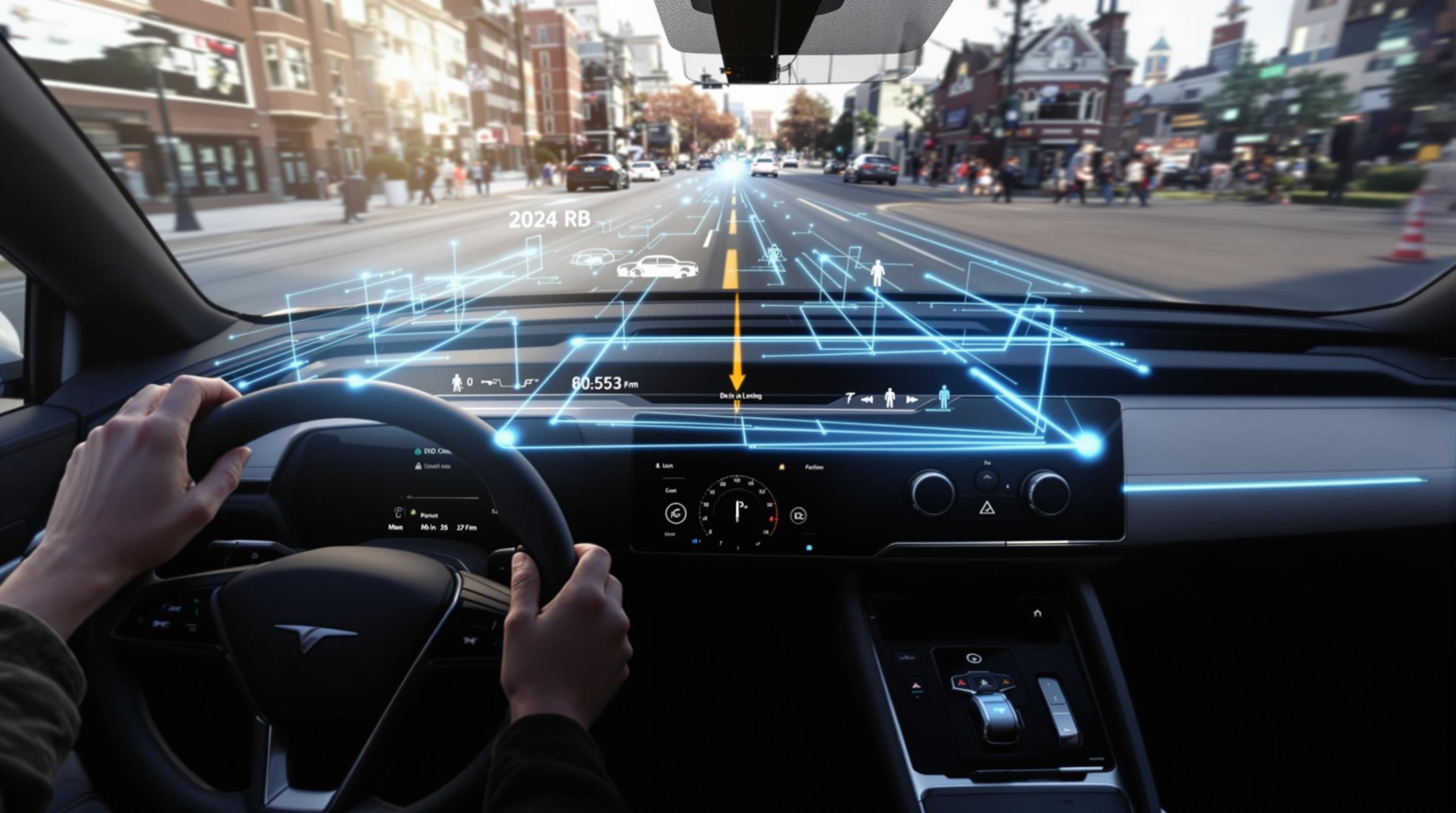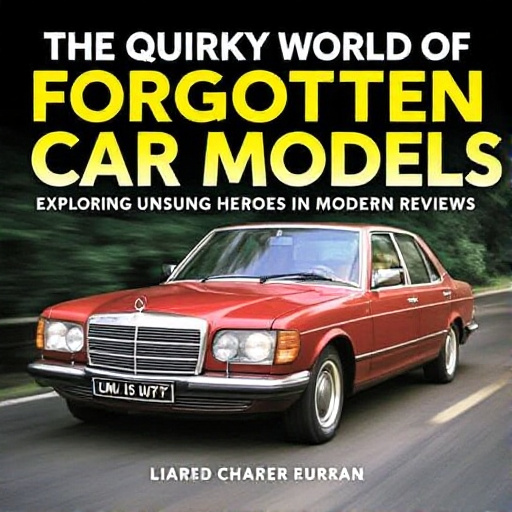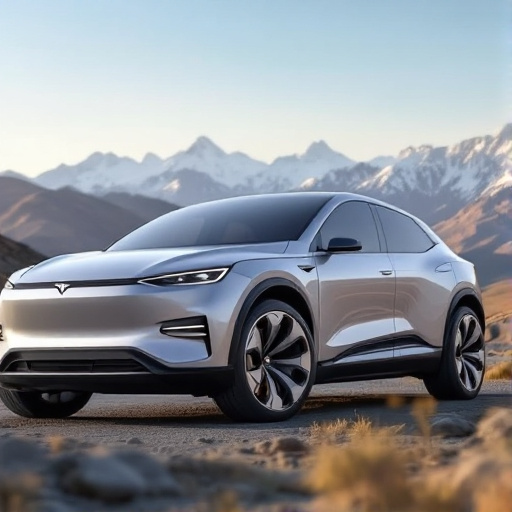Related Articles
- Charged Up! How Electric Vehicles are Reshaping Urban Wildlife Habitats and Biodiversity
- Navigating the Used Car Market: Uncovering the Secrets of 'As-Is' Sales for Savvy Buyers
- The Rise of Electric Car Pop-up Shops: A New Frontier for Urban Retail Experiences
- The Forgotten Art of DIY Car Maintenance: Rediscovering Skills in a Tech-Driven World
- Electric vs. Vintage: The Battle for Enthusiasts' Hearts in the Age of Latest Car Models
- The Rise of the 'Car Review Influencer': How Social Media is Shaping Auto Buying Decisions
The Rise of Electric Classics: Are Retro EV Conversions the Future of Car Culture?
The Rise of Electric Classics: Are Retro EV Conversions the Future of Car Culture?
The resurgence of electric vehicle (EV) technology combined with the charm of vintage cars has led to a new wave of retro EV conversions, enthralling car enthusiasts and eco-conscious drivers alike. As we delve into this fascinating movement, we explore not only the practicality and sustainability of electric classics but also their potential to redefine car culture as we know it.
The Allure of the Classics
There’s something timeless about classic cars—perhaps it’s their elegantly curvy lines, their robust engines, or the stories they tell through decades of history. For many, descending into the cockpit of a vintage automobile is akin to slipping into a familiar leather armchair, inviting and comforting. Classic car aficionados often form clubs, sharing their passion and knowledge, and reveling in the nostalgia that these vehicles evoke.
Why the Shift to Electrification?
Yet, the general automotive landscape is undergoing seismic shifts driven by advances in technology, environmental concerns, and consumer preferences. According to a report from the International Energy Agency, global sales of electric cars surged to 10 million in 2022, level with a 54% increase from the previous year. But why the sudden interest in electrifying classics? A compelling reason is sustainability—a classic car, restored and powered by batteries, can significantly reduce an individual’s carbon footprint.\n
Statistics Speak Volumes
Statistics from eco-oriented organizations have highlighted that traditional internal combustion engines (ICEs) emit around 4.6 metric tons of carbon dioxide (CO2) per year, whereas EVs generate zero tailpipe emissions. By converting a classic vehicle into an EV, enthusiasts not only preserve the aesthetic but also contribute to combating climate change. Such changes are received with enthusiasm, especially among younger generations, who are particularly ecologically minded.
The Engineering Challenge
Embarking on a retro EV conversion isn’t merely glorified recycling; it’s also an engineering puzzle. Enthusiasts have to carefully upcycle the original car’s body while integrating advanced technologies, energy storage systems, and electric drivetrains. The conversion can range from straightforward battery installations to more complicated revamps involving motors, emission management systems, and various electrical components. Some shops, like Zero Labs Automotive, have become experts in this niche, offering complete services that capture the essence of a classic model while incorporating modern electric technologies. Their 1967 Ford Mustang EV conversion, for instance, can go from 0 to 60 mph in 3.8 seconds, a far cry from its gas counterparts that took nearly twice as long.
The Community Phenomenon
At the heart of the retro EV movement is its burgeoning community. More than just neat tech, these conversions are a way for owners to share their stories and connect over a shared admiration for automotive history. Social media platforms, particularly Instagram, have become a haven for retro EV enthusiasts who showcase their builds. “People love the journey, from picking out what kind of EV systems to use, to the fun of retrofitting the vehicle,” shares James, a 32-year-old engineer who converted a 1981 Datsun 240Z into an electric vehicle using batteries from a Tesla. “Everyone has that one car that sparks their passion, and with EVs, you can get the performance without losing the heart of the classic.”
What About the Regulations?
Despite the enthusiasm, navigating the regulatory landscape can be daunting. Many states impose specific guidelines that need to be adhered to, which might deter some from embarking on their conversion project. Familiarity with these regulations helps ensure a successful conversion and ownership experience, lest one find themselves of out compliance with state or local laws. In California, for example, they have recently introduced programs aimed at incentivizing retrofitting classic cars, indicating a growing acceptance of this trend. Additionally, companies such as EV West are turning this into an expert art, helping owners navigate legal nuances while focusing on preserving the classic appeal.
Blend of Tradition and Innovation
The conversion of classic cars to electric isn’t merely an innovative trend—it’s a cultural phenomenon that explores the intersection of nostalgia and modernity. Imagine driving a fully electric 1960s Volkswagen Beetle, humming along silently while attracting admiring glances everywhere you go. This fusion appeals not just for its environmental benefits but also for its embodiment of progress while holding onto the past. “We have a responsibility to honor the classics while pushing forward,” Rebecca, a 45-year-old car restoration expert, stated passionately. “You can hold onto history while also embracing the future.”
Case Study: The Iconic Porsche 911
The conversion of the iconic Porsche 911 by companies like E-Classic is a prime example of retro EV conversions gaining traction in the luxury car market. This revered car, known for its high-performance turbos and the delightful roar of its engine, is getting a second life as an EV. Imagine taking an exhilarating drive through winding roads, authenticated by classic looks yet powered with groundbreaking technology! Many high-end enthusiasts are now looking to convert their luxury classics into EVs, merging top-notch performance with modern virtues. Not only does it boost environmental sustainability, but it also enhances the car’s functionality and operational longevity.
The Visual Appeal
One cannot overlook the visual excitement that these electric classics present. A fleet of electrified classics, be it a mint-condition 1961 Ford Falcon or a lovingly preserved 1957 Chevy Bel Air, emits a charm that is hard to resist. The broad palette of colors available for battery cases, the spectacle of contemporary technology housed within vintage shells, and the satisfaction of creating a custom piece of history position retro EVs uniquely in the automotive landscape. It’s a chance to stand out among an increasingly homogenous array of modern vehicles.
Challenges Ahead
However, challenges lurk behind the allure. The cost of conversion can be steep, often more than purchasing a brand new EV. Depending on the level of customization, estimates can range from $5,000 to over $100,000. Moreover, not every classic car is ideal for conversion; some models, due to their weight or construction, may face significant challenges. However, grants and funding initiatives are cropping up globally to lessen the financial burden of conversions, paving the way for more enthusiasts to partake.
Bridging Generations: A Shared Love
Retrofitting traditional cars to EVs isn’t just about personal desires; it’s also an opportunity to connect generations. Grandparents sharing tales of engineering and the thrill of gas-powered horsepower can now see their grandkids engaging with the modern tech in what used to be their prized possessions. “I see my grandkids spark with excitement when they work on the family Cadillac,” chuckles Henry, a 70-year-old vintage car collector. “It’s great to involve them and teach them about the beauty of both forms of engineering.”
The Future of Car Culture?
As the automotive landscape continues to evolve, retro EV conversions pose a promising future for car culture. They represent not just a way to enjoy beloved vehicles in a more responsible manner, but they also resurrect the vintage aesthetics that many in the millennial and Gen Z age groups covet. Electric classics offer a middle ground between the nostalgia associated with vintage vehicles and the environmental advantages of modern technology.
Final Thoughts: A Provocative Question
Arguably, the question isn’t whether retro EV conversions are here to stay but rather how they will continue to influence driving culture as technology spiritualizes mobility. As society becomes increasingly tech-driven and eco-conscious, retro EVs might emerge as not just a niche market but a movement that stands for both innovation and tradition. Perhaps the ideal vehicle of the future isn’t just electric, but a wraparound canvas showcasing decades of auto-culture, embraced with a modern twist!
In a world where the gears of innovation and tradition join, the journey toward retro EV conversions seems just to be beginning. Can you imagine cruising down an open road, converted classic in tow, with the whispers of history and future colliding seamlessly in one ride?




